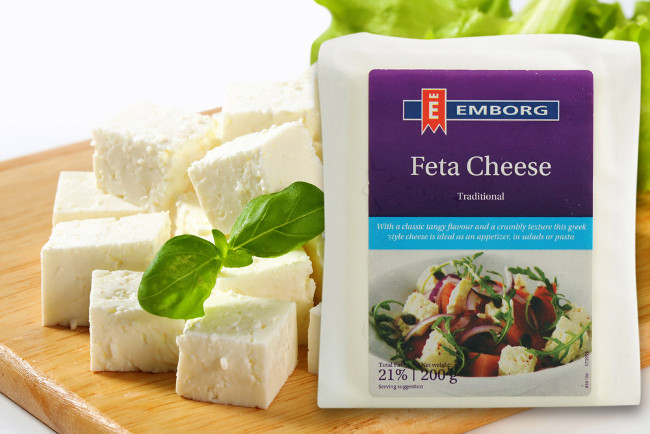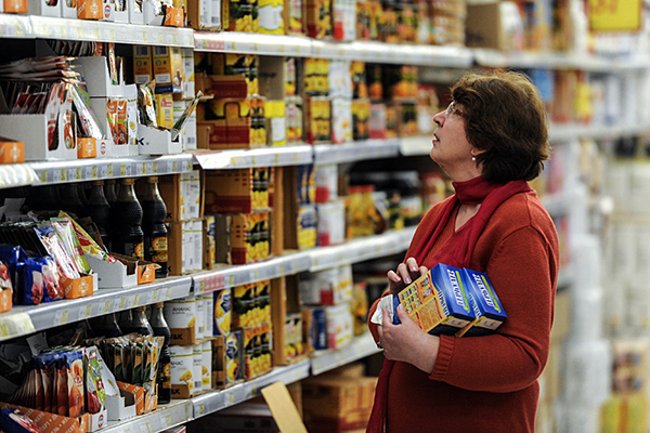7 unconscious errors are often acquired when buying brand products
Hallucinations are perceptions of being true about a thing, a phenomenon that is not true in objective reality. The feeling of hallucination is how we buy brand products. Here are 7 interesting psychological mistakes that each of us makes when purchasing brand-name products and services . Because of those mistakes made from unconsciousness, first of all what we need to do is be aware of them. Recognizing the absurdity of decisions can help us make reasonable choices and save money. Invite you to consult!
1. Create value in a place where there is no value and pay more than what is received
Brands often have no added value in the product, but rather it is in our minds. That's because our interests are formed by expectations and are made up of our memories of it. The problem is, most of those brand memories are stored in our unconscious.
 Photo source: clubfitnessblog.blogspot.com
Photo source: clubfitnessblog.blogspot.com
When we think about buying something, we automatically dredge all the past impressions and summarize the value of the brand in the form of deep emotions in the heart - good, bad or worship. Oh. All these emotions are what advertisers call brand value ( Brand Equity ). We don't remember all the experiences we have but just remember the general impression of them. The more positive the emotions, the more likely we are to buy and pay more for the brand.
There is a bit of logic here in how we love brand products. Reade Montague and his team at Baylor College of Medicine explained this when they recreated the famous Pepsi ad with alcohol. Volunteers agreed to let their brain scanners while comparing the taste of Coca Cola to Pepsi. The original Pepsi challenge proves that most people like the taste of Pepsi in tasting blindfolded tests, without knowing which brand to drink. In fact, however, Coca Cola is bought by more people. So how to reconcile these observations?
Montague's team found that when participants did not know which brands they were tasting, the level of interest and neurological response were the same. But when participants learned the brand by exposure to the can of water cans before they tasted the taste, they all said they liked Coca Cola more and had activation in the brain regions involved in decision making. , memory, associations and emotions. Just seeing the Coca Cola brand is enough to create greater activation in the brain's pleasure centers and increase dopamine levels when it is not necessary to take a sip!
Branding not only changes our beliefs and experiences, it even makes us feel better about a product just because it has a bigger price. That's because experience has taught us that expensive things are always of higher quality. The Heuristic algorithm ( techniques based on problem solving, learning or discovery techniques that offer a solution that is not guaranteed to be optimal ) or " thumb rule " that pays us a lot 85% more money for a brand-name drug than the generic drug, although the US Food and Drug Administration - FDA says generic drugs have the same quality and features.
Scientists at Caltech and Stanford proved this when they told participants that they would compare Cabernet Sauvignons at various prices, while the fact that researchers gave the participants wine and only change the price. Participants, after all, believed that a wine with a higher price was better to drink. Then the brain scanner revealed that there was a greater activation in a brain's pleasure center when the study participants believed they were drinking more expensive alcohol, even if those wines were same!
2. Make decisions by more emotional connection by rational analysis
Perhaps the most important finding in neuroscience is the central emotions of awareness and decision. Advertising is effective by a process of Unconscious Behaviorism . We are conditioned by the media at a profound level of unconsciousness and this implicit conditioning controls our interests with the brand.

This is demonstrated in a study when participants interact with fictional brands and images and words - some negative and some positive. After seeing hundreds of pictures combined with many fictional brands, participants could not recall which brands were associated with which paintings and words, but they still showed their interest in those brands. Positive conditional brand. The study's authors call it the "T I like it, but I don't know why " effect. In the next experiment, participants saw product information as opposed to their initial impressions, giving reasons for rejecting the products they had been conditioned to like, but they still choose brands associated with positive images. The actual opposite information does not break the precondition, indicating that their choice of products is more controlled by unconsciousness than rational analysis.
This means, you can be conditioned through advertising to choose inferior products. We can even be conditioned to find great joy in things that harm us. For example, why do we love the smell of a brand new car? The smell represents the pride of the owner, improving our ego with the feeling of importance and specialness. But this new smell is really poisonous. Even if that new smell fades over time, we still volunteered to interact daily with the chemical pile by buying new fake car-scents containing aldehydes, esters, and ketones.
Even scary images that warn on cigarette packs about the risk of heart disease or pulmonary emphysema (emphysema) can stimulate the nucleus accumbens brain region, " craving place " in smokers' brains given. out in another study. Clearly the warning images have linked to the past pleasures of smoking rather than effectively alerting people to future health risks.
3. When there are strong positive emotions about a brand, we look for supporting evidence and ignore conflicting information.

Don't live by reason ; we are rationalists. We make decisions based on emotions and seek supporting evidence. When our aspirations begin to lead to a future brand, then we find reasons to be consistent with that intention. Reason is always looking for evidence to support their dominant beliefs . the stronger the emotion, the stronger the belief and the greater the tendency to seek evidence to support belief. This confirmation bias is why we often overlook the shortcomings of the person we love, even if the beloved person is a brand. We focus our attention on the positive qualities of the brand and ignore the defects. No matter how much the argument is, it is impossible to overcome strong emotions because the emotional-dominated mind will always find its reasons to believe.
4. Draw conclusions based on how the information is presented, not the information itself
An advertisement for cream cheese that claims 95% fat-free is more likely to convince us when it comes to containing 5% fat. In fact, it is the same but the positive concept is not concrete evidence appealed.

Instead of telling the truth, most advertisers often attach their messages to creative media, evoke emotions and avoid reasoning resistance. This is why advertisers use stories, poems, slogans, songs, jokes, pictures, symbols, characters, roles and metaphors.
Most of all, they are marketing tools, leading to imagination and evoking emotions that strike the heart, not our minds. A common technique is to use a spokesperson. We can transfer positive emotions to the brand, even the role of the character is only fiction. For example, when actor Peter Bergman - who plays Dr. Cliff Warner in the television series "All My Children", starred in Vicks Formula 44 and was supported when saying, " I'm not a doctor, but I'm once a doctor on television, "many people consider his words on TV a reliable fact. Because they often looked at Bergman in a white lab coat, in their eyes he had a license to become a real doctor.
5. The more we interact with a brand, the more we like it

The leading force in human behavior and biology is the state of equilibrium, or the search for a stable, balanced and predictable state. Everyone ( and all customers ) feels very comfortable with what they know and are familiar with.
Robert Zajonc, a psychologist at Stanford University, demonstrates that familiarity produces affection, a process that he calls " mere exposure effects ". Psychologist Zajonc offers participants a series of random choices about shapes in rapid succession, making groups not consciously distinguish the frequency of each shape given. What he sees is when asking about the shapes they find most satisfying, trusted people will choose the people they contact most often, even if they are not aware that they are See how often that shape is or how often they see them.
Therefore, there is no need to wonder when we are exposed to thousands of ads every day. For example, the focus of Coca Cola is always establishing a brand that can be recognized and evaluated immediately. Adopted, consistent classic logos, iconic lines in the bottle design, sweet chorus in the brand name and it is world class brand investment, moving advertising and is widely retail It not only became the first global brand but also the most well-known brand in the world. In 2011, the Coca-Cola brand was worth an estimated $ 74 million - more than the Budweiser (the world's No. 1 beer brand), Pepsi, Starbucks (the world's largest coffee brand). and Red Bull energy drinks - a position maintained by spending $ 2.9 billion on advertising in 2010, more than the advertising budget of Microsoft and Apple combined.
Simple contact over time can overcome our survival instincts. For example, our coffee addiction, all people are born with no taste of bitterness, a trait that is always available in all types of coffee. When tasting something bitter, a common reaction in humans would be to spit it out to avoid poisoning, because the bitterness warns the presence of toxins. This is why children often dislike the taste of coffee and why bitter synthetic chemicals are often added to harmful substances such as absolute antifreeze and alcohol (denatured alcohol), to avoid these poisoning cases. But thanks to the merits of famous brands like Starbucks, modern people have learned to overcome and change innate dislike with bitterness becoming a favorite. We learn how to combine coffee with relaxing and social rituals, as well as interesting effects of caffeine and transform a cheap commodity into a "$ 5 experimental" substance. No doubt Starbucks is a famous brand.
6. Make decisions based on memories of personal experience rather than actual experience
According to brain experts Jeff Brown and Mark Fenske, we remember better and encode stronger when in a good emotional state. Marketers are architects of remembrance. How we feel about a brand depends largely on the memory of the experience brought by the brand, not what actually happened. We do not rely on practical experiences but rely almost entirely on the moments of climax and the ending impression - is positive or negative - that the brand has brought. This trend is what behavioral economist Daniel Kahneman calls the "peak-end rule".

A good example is a project called " Red Bull Stratos " with a noble mission that surpasses human limits. On October 14, 2012, Felix Baumgartner reached the edge of the space of the world watching live on the edge from his seat. The supersonic skydiving ( speed greater than the speed of sound ) is made, setting a record break down to escape a " dead battery " to avoid disaster and safely hit the ground unharmed. Not surprisingly, Red Bull continues to dominate the energy drink market, the kind that one hand creates.
7. Be convinced by advertising based on consistency and coherence, not based on quality and quantity of information
The best advertising campaigns include an idea that causes clear, simple, repetitive emotions. In fact less than that is more, it helps explain the common presence of 30-second ads. The conscious mind will jump to conclusions, forming a coherent story based on departmental information. The tendency to draw conclusions from the missing information is a rule that Kahneman calls " What you see is all there is " (translated: "what you see is all"). Kahneman argues that consistency and coherence, not the quantity or quality of information, are the keys to forming views.
Not surprisingly, one of the hottest new forms of advertising is " Branded Content " (a form of brand promotion through long-term sponsorship, which links images to a TV show. ). Gradually, advertisers choose to invest in the form of entertaining stories that blur the line between regular advertising and entertainment. We may prefer these new forms of advertising, but we may also be affected more by them without understanding why.
Refer to some more articles:
- What actually do we get when purchasing branded packaging products?
- 20 harmful ingredients are often found in beauty products
- 12 lessons about happiness I learned in the most difficult situation
Having fun!
You should read it
- Top 5 good quality coffee machines, cheap prices are currently rated
- What is the best brand coffee machine between Saeco, Delonghi and Melitta?
- Debranding and the era of the 'no words' logo
- What actually do we get when purchasing branded packaging products?
- Top brands in the world's most valuable names Apple and Microsoft
- Discovering 20 great uses of Coca Cola you may not know
- Buy fryer without oil what kind of good?
- What is a coffee maker? Classify coffee makers on the market
- How to Clean a Nespresso Capsule Coffee Maker
- The body's amazing change after you drink a cup of coffee from 10 minutes to 6 hours
- Which brand of laptop should I buy? 7 best laptop brands today
- 8 reasons you should give up the habit of drinking Coca-Cola every day
May be interested

The first baby in the world was born from three parents, of which 2 were infertile

Decipher the mysterious 'dead zone' inside of the tornado

The unique 'crispy fried water' dish surpasses the allowable limit of physics

The magic ice 'dance' in the soap bubble

Why does soap create bubbles?

9 'crazy' mistakes that science once recognized it as true






 How to Hack Your Unconscious Mind and Untap Your Potential
How to Hack Your Unconscious Mind and Untap Your Potential 5 things to know before buying a tested 11ax router
5 things to know before buying a tested 11ax router HTC denies being bought by TCL
HTC denies being bought by TCL 6 questions to ask before buying a new laptop
6 questions to ask before buying a new laptop Experience ordering online shopping on Ebay
Experience ordering online shopping on Ebay 11 largest acquisition of Google from 2006 to present
11 largest acquisition of Google from 2006 to present